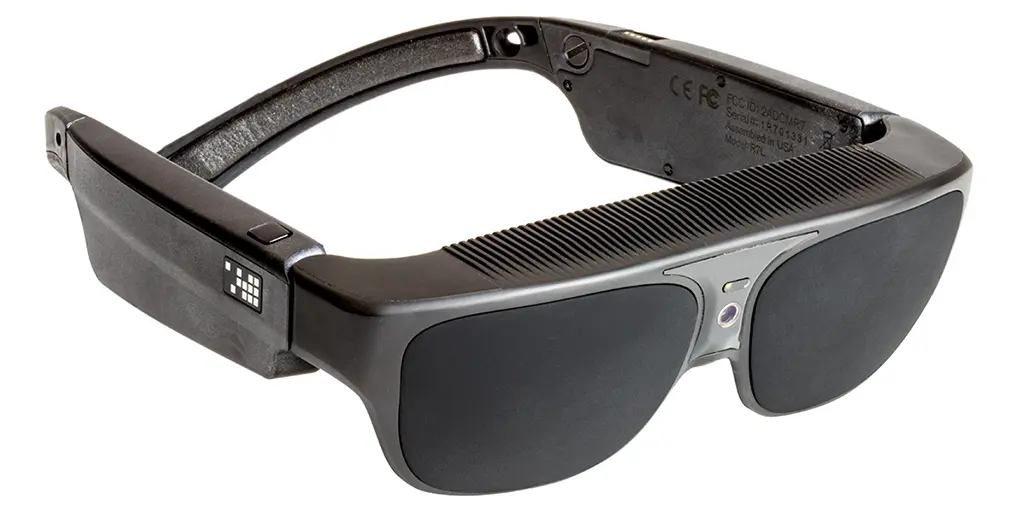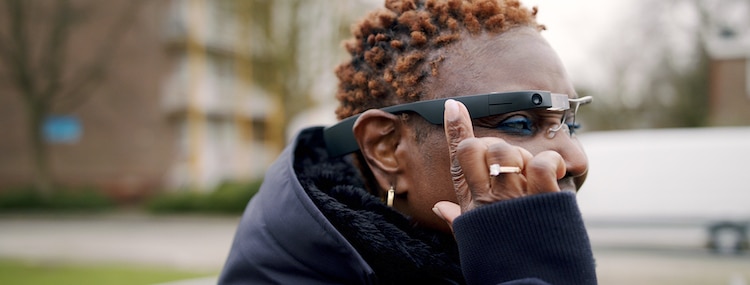Wearable Technology for Low Vision: Transforming How We Navigate the World
Wearable Technology for Low Vision: Transforming How We Navigate the World
Blog Article
Discover Advanced Assistive Devices for Individuals With Visual Problems
The landscape of assistive technology for individuals with visual problems is progressing swiftly, providing an array of ingenious tools that enhance freedom and involvement. From smart glasses that flawlessly merge aesthetic input with acoustic assistance to advanced navigation applications that redefine spatial understanding, these tools are improving possibilities.
Smart Glasses Innovations
Smart glasses represent a substantial development in assistive innovation for individuals with visual impairments. These ingenious devices integrate different features made to boost the individual's interaction with their atmosphere. Equipped with cameras and sensing units, wise glasses can record real-time aesthetic info, which is after that processed and communicated to the customer through sound comments or haptic experiences. This functionality enables people to obtain immediate descriptions of their surroundings, improving their capacity to involve and browse with the world.
Additionally, innovations in expert system have additionally improved the capacities of clever glasses. Artificial intelligence formulas can recognize faces, reviewed message, and recognize objects, making them vital tools for day-to-day tasks. Customers can obtain acoustic cues that give context regarding their environment, fostering self-reliance and self-confidence.
Furthermore, the ergonomic design and light-weight nature of several clever glasses make them ideal for long term usage, ensuring comfort while enhancing functionality. As these gadgets continue to develop, they hold the possible to revolutionize the way individuals with aesthetic disabilities experience their lives, linking the gap in between ease of access and technology. The ongoing research and development in this area guarantee to broaden the possibilities for smart glasses, making them a crucial element of modern assistive tools.
Navigating Application and Tools
Countless navigating applications and devices have emerged as necessary sources for individuals with aesthetic problems, considerably enhancing their ability to go across unknown atmospheres. These modern technologies leverage GPS capability, audio signs, and real-time information to offer customers with specific navigating help.
One popular instance is the Aira app, which connects users to qualified representatives that can give visual summaries of surroundings and navigating support via an online video feed. This solution improves the individual's spatial recognition and self-confidence while browsing. An additional remarkable device is Seeing Eye GPS, which supplies voice-guided navigating and sights, allowing customers to gain access to essential details regarding their environments.

As innovation remains to breakthrough, the growth of a lot more advanced navigating devices assures to further encourage people with visual problems, assisting in seamless movement and combination into diverse atmospheres. Such developments contribute in advertising a much more comprehensive society.
Braille Modern Technology Improvements
In recent years, developments in Braille modern technology have considerably transformed just how individuals with aesthetic impairments gain access to info and engage with the world around them. The growth of portable Braille screens has actually reinvented reading by allowing customers to connect wirelessly to my blog mobile phones, tablet computers, and computer systems. These devices convert text into Braille in real-time, allowing seamless communication with electronic material.
Furthermore, innovative Braille printers have actually emerged, improving the manufacturing of tactile products. Modern embossers are faster and a lot more effective, enabling for the quick development of Braille files and academic materials. This effectiveness decreases the moment and price related to generating Braille sources, making them more available to companies and institutions.
Furthermore, the integration of Braille with other modern technologies, such as expert system and equipment knowing, has actually opened up brand-new methods for individualized understanding experiences. Voice acknowledgment and synthesis modern technologies can enhance Braille, supplying an inclusive technique to details circulation.
As the need for comprehensive education and office settings grows, these technological innovations play a crucial function in equipping people with aesthetic impairments, ensuring they have equal accessibility to details and chances in numerous elements of life.
Wearable Tools for Independence
A growing selection of wearable gadgets is enhancing independence for people with visual disabilities, supplying ingenious solutions that enhance navigating and daily living. Braille displays and notetakers. These tools utilize innovative technologies to supply real-time feedback and support, promoting autonomy in different environments

Wearable technology additionally includes smartwatches that can be configured with accessibility attributes, allowing users to receive alerts, track their areas, or even ask for assistance with the touch of a switch. Some tools integrate synthetic intelligence to evaluate the setting, offering sound descriptions of nearby things or individuals.
Voice-Activated Assistive Solutions
Leveraging voice-activated assistive services has actually transformed the landscape of support for individuals with aesthetic problems, supplying hands-free interaction and accessibility to a range of jobs. These modern technologies make use of all-natural language handling and expert system to allow users to carry out daily tasks with basic voice commands.

Additionally, current advancements in voice recognition precision have actually enhanced the individual experience substantially, fitting varied accents and speech patterns. This inclusivity guarantees that even more people can take advantage of these technologies, cultivating a better sense of autonomy.
Verdict
In final thought, the development of innovative assistive devices substantially boosts the self-reliance and lifestyle mcoptom degree for individuals with aesthetic disabilities. Developments such as clever glasses, navigating apps, Braille modern technology, wearable tools, and voice-activated services jointly promote an even more inclusive setting. These innovations encourage users to browse their surroundings with self-confidence and engage even more completely with the globe, eventually promoting higher access and equal chances for people dealing with visual difficulties.
The landscape of assistive technology for people with aesthetic problems is developing swiftly, offering a variety of innovative tools that enhance autonomy and interaction.Smart glasses stand for a significant development in assistive modern technology for individuals with aesthetic problems. As these gadgets continue to advance, they hold the potential to revolutionize the way people with aesthetic problems experience their daily lives, bridging the void between accessibility and department of optometry modern technology.In current years, developments in Braille technology have dramatically transformed exactly how individuals with visual disabilities gain access to details and involve with the globe around them. These modern technologies encourage individuals to browse their environments with confidence and engage more fully with the world, ultimately advertising better accessibility and equivalent possibilities for people encountering visual challenges.
Report this page